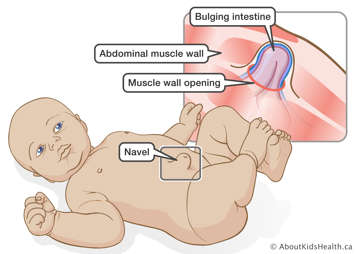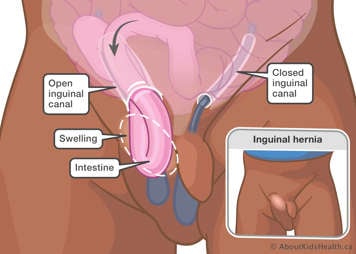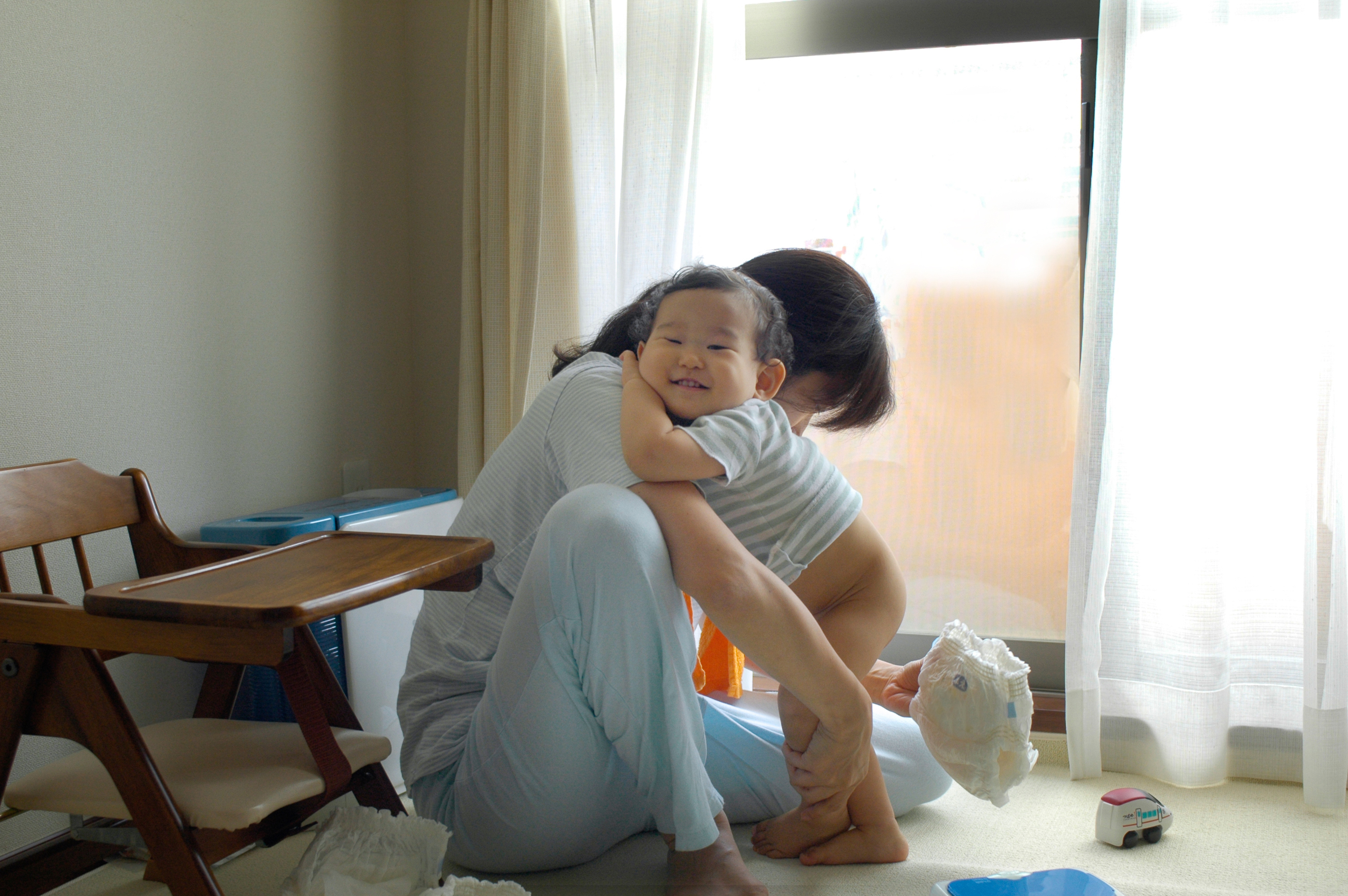What your child's health-care provider can do if your child has a hernia
Your child's health-care provider will examine the hernia. They will decide whether your child needs surgery.
Treatment
Umbilical hernia
Most children do not need surgery for an umbilical hernia. It is rare for an umbilical hernia to become strangulated. Surgery may be required if the hernia is very large or not going away. If surgery is needed, it is a minor operation. During surgery, the intestine is put back in place. The abdominal wall muscles are stitched up. The surgery is usually done after the age of three years.
Inguinal hernia
All children with inguinal hernia need surgery because the hernia may become strangulated. Usually, the operation will be booked ahead of time. However, if the hernia is painful, your child may need emergency surgery.
During surgery, the small intestine, or other organ or tissue, is pushed back into place. The surgeon repairs the hole or space that is causing the hernia. The surgeon may check the other side of the groin for another hernia or weakness.
In general, your child can return home the day of the surgery, and they can be active in a few days. More information is available here: Hernia repair: Care for your child after the operation.


